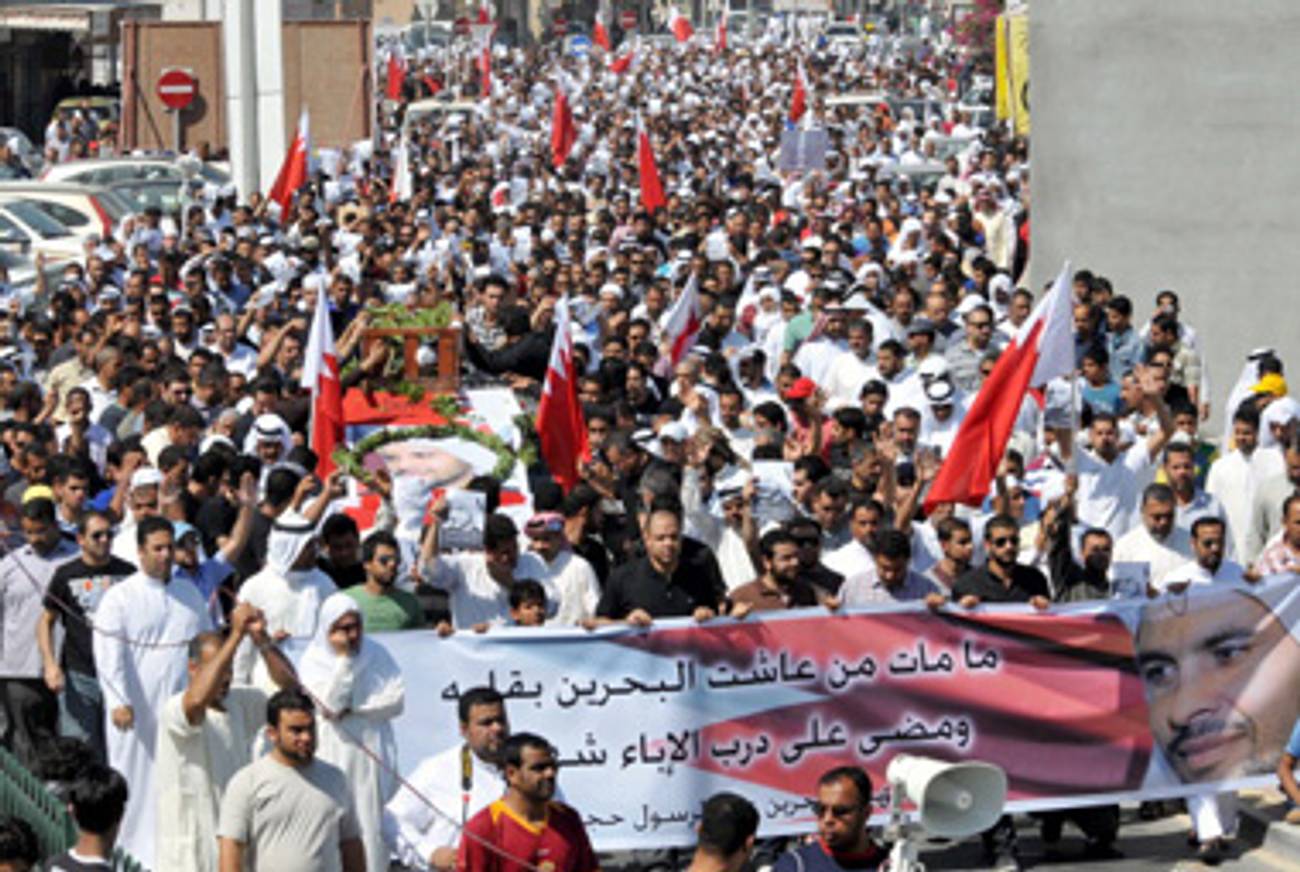One More Battle Between the U.S. and Iran
What Obama’s reactions to the Arab upheavals are really about




If you’re looking for the skeleton key to understanding the Obama administration’s seemingly inconsistent responses to the various crises in the various Arab states (which you can follow the course of in this fantastic Slate graphic), it increasingly seems one word can explain a great deal: Iran. Consider: The administration is using U.N.-authorized military force against the Libyan regime; supported the overthrow of Egypt’s regime; and is essentially backing Bahrain’s king’s violent repression of protesters, including with the aid of invited Saudi forces. This, the Wall Street Journal reports, is largely about Iran: “Obama’s decision last week to use military force against Libyan leader Moammar Gadhafi’s forces was made in part by his administration’s fear that Western inaction could further embolden Tehran. … U.S. military planners are also concerned Iran could benefit from an overthrow of the monarchy in Bahrain, home to U.S. naval operations that help control the Persian Gulf’s oil flow.” Indeed, over the weekend, Secretary of State Clinton warned Iran not to meddle in Bahrain, in which a Sunni (and therefore Saudi-allied) king is facing angry protests from Shiite (and therefore Iranian-allied) people, which as a group constitute the majority of the population of the Gulf state.
Essentially, Washington, D.C., sees a mix of opportunity and danger in the upheavals. If it plays its cards right, it is aiding people power (as well as ushering in more democratic governments, which, if you believe the arguments of some, is a better guarantor of long-term stability) as well as keeping the flame of rebellion alive so that it can spread to Syria and even Iran itself, in which the United States would like little more than internal regime change. If it plays its cards poorly, however—in part, if the Arab League, which backed a Libyan no-fly zone, turns against the action there—the Libyan intervention will be seen as yet another instance of (to put it bluntly) America bombing Arab and Muslim civilians. And in Bahrain, as the New York Times’s Michael Slackman laid out, the U.S. could be seen as a hypocrite that backs violent authoritarianism where a certain valuable viscous black liquid is at stake.
In short, and to oversimplify only a little, the past three months have confirmed that the region is essentially one big battleground between the U.S. and Iran, and their respective clients. And this, moreover, could be a useful heuristic for viewing the Israeli-Palestinian conflict over the next couple of months, particularly where the rising tensions with (Iran-backed) Hamas are concerned.
U.S. Reacts to Fear of Iran’s Rising Clout [WSJ]
Clinton Warns Iran About Persian Gulf Meddling [AP/WP]
The Proxy Battle in Bahrain [NYT]
Related: The Arab Powder Keg [Slate]
Marc Tracy is a staff writer at The New Republic, and was previously a staff writer at Tablet. He tweets @marcatracy.